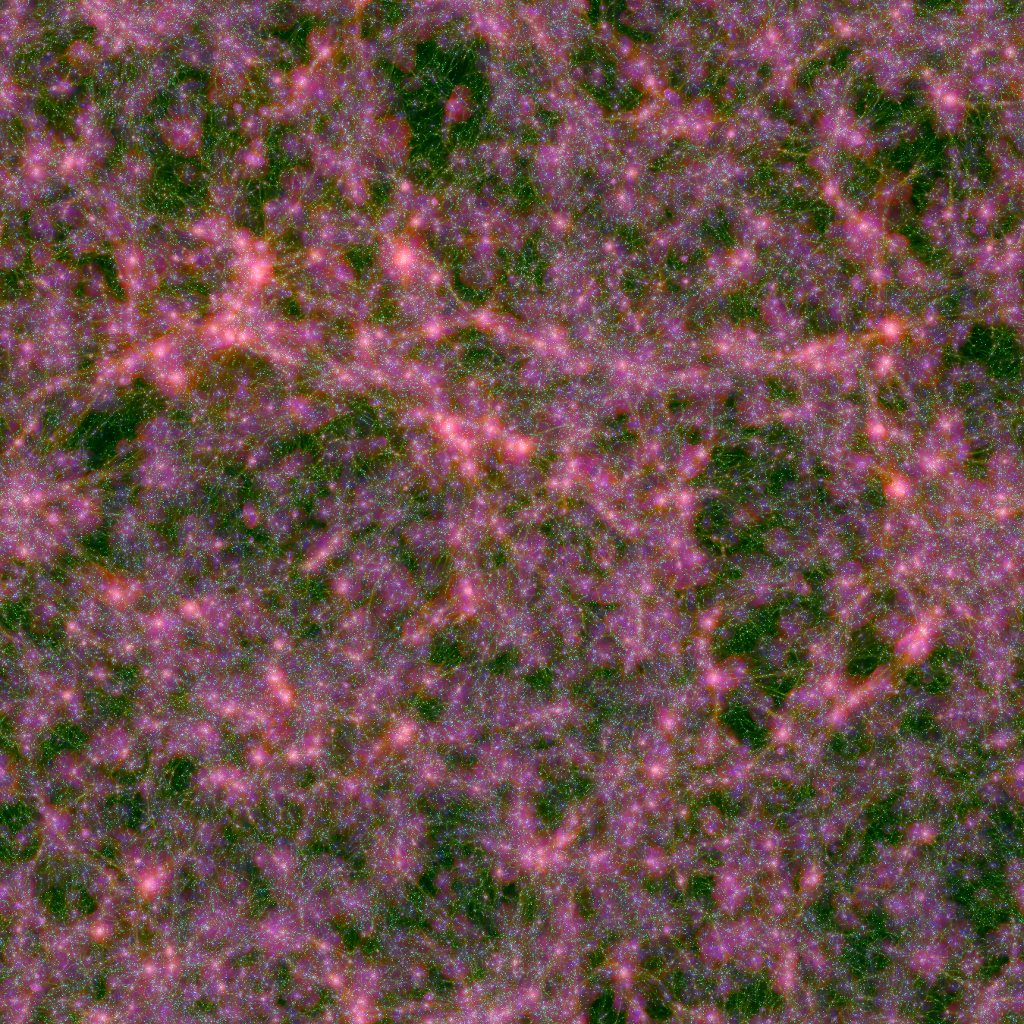A simulation of the Universe -- Horizon-AGN

© Yohan Dubois
Our Universe is far from being random. Billions of stars are organised into galaxies. Galaxies cluster together and align themselves along cosmic filaments.
In order to understand the underlying complexity in the way stars are formed, how galaxies grow and evolve over the cosmic time, how filaments are formed and how they shape the galaxies astrophysicists often use computer simulations. We program computers to calculate the consequences of the physical laws which we think are important in explaining the processes we want to understand. To start, we create initial conditions, such as the observed state of the early Universe, just after the Big Bang. The computer then evolves these virtual initial conditions. These computer simulations are our laboratory tests that help us to make sense in the complexity that is our Universe.
The image shows the projection of the entire volume of a simulation of the Universe at redshift z=1.2 of the gas density in green, the gas temperature in red, and the gas metallicity in blue.
For more information about the Horizon-AGN simulation: www.horizon-simulation.org





